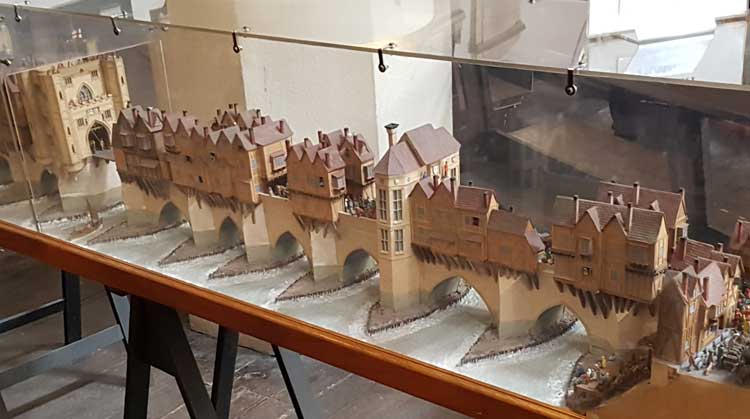
Whenever I find myself in the vicinity of the Monument, I always take the opportunity to step inside one of London's loveliest churches, the church of St Magnus The Martyr.
The church has that certain indefinable something that makes it a truly special and spiritual place, and I always emerge from a few moments of quite reflection within ready to face the trials and tribulations of the busy streets of London without,
St Magnus The Martyr has an intriguing claim to fame - or, at least, a reason to be taken notice of - because the churchyard was once a busy and bustling place through which people used to make their way onto Old London Bridge; a fact that is commemorated by a plaque on the church's external wall.
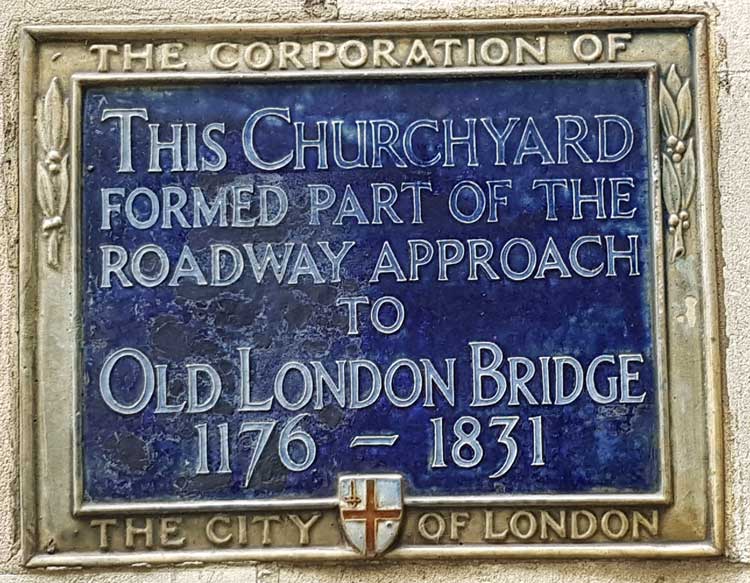
There has been a church on the site since the 11th century.
However, the present church dates from the 17th century, after its predecessor had been destroyed by the Great Fire of London (1666) which began across the road in Pudding Lane.
In the 18th century, it was decided to "improve" the bridge and, the tower of St Magnus the Martyr became the pedestrian route onto the bridge, and remained so until the 1830's, when a knew London Bridge, designed by John Rennie, was commissioned a little further upriver from bridges had spanned the Thames since Time immemorial.
With the construction of the new bridge, St Magnus saw a considerable easing of the busy traffic that once bustled beneath its tower and through its churchyard and, eventually, the old bridge became little more than a distant memory.
Until, that is, in 1987, David T. Aggett, a liveryman of the Worshipful Company of Plumbers decided to create a scaled model of the old bridge which captured in exquisite details, not only the bridge itself, but also the sheer frenetic confusion that must have emanated from the hundreds, if not thousands, of people who would have crossed the bridge, day in and day out, throughout its medieval existence.
And, to see it, you just have to step inside the church of St Magnus the Martyr, where the replica of the old bridge occupies pride of place just inside the inner doors of the church.
The attention to detail is truly impressive. From the grooves of the lead tiles to the building themselves, some of which totter precariously over the river, looking as though they might, at any moment, plunge into the raging waters.
Over nine hundred tiny people are crammed onto the bridge, amongst them a miniature King Henry V, who can be seen processing towards the City of London from the Southwark side of the bridge.
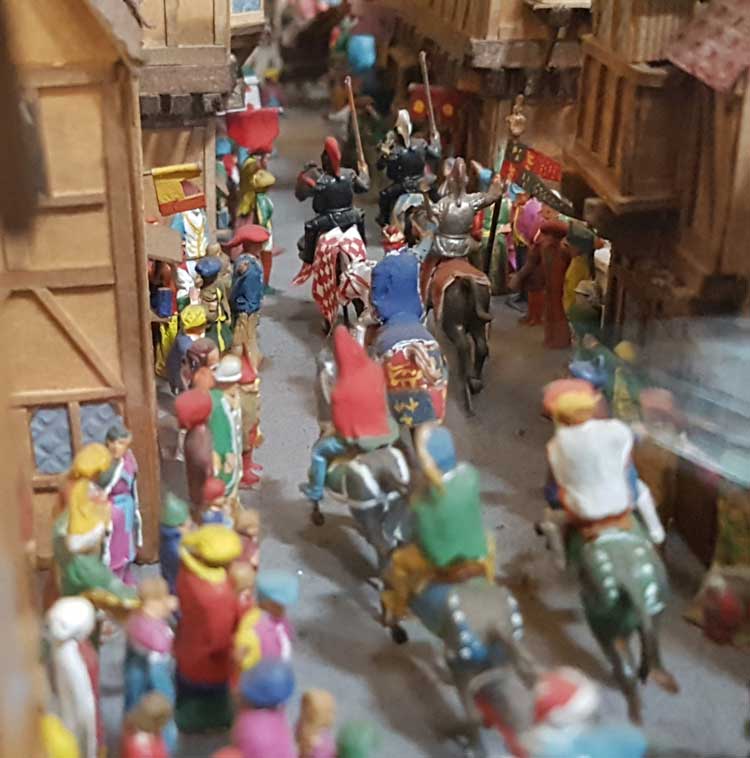
A chapel dedicated to St Thomas Becket (1118 - 1170) used to stand at the centre of the bridge, and this used to be a gathering point for pilgrims who were about to set out along the dusty byways to the south of the bridge en route to the saint's shrine at Canterbury.
It must have made a picturesque sight; and, indeed; it still does in miniature as it has been recreated on the model, enabling us to picture how it would have appeared to those long ago medieval pilgrims.
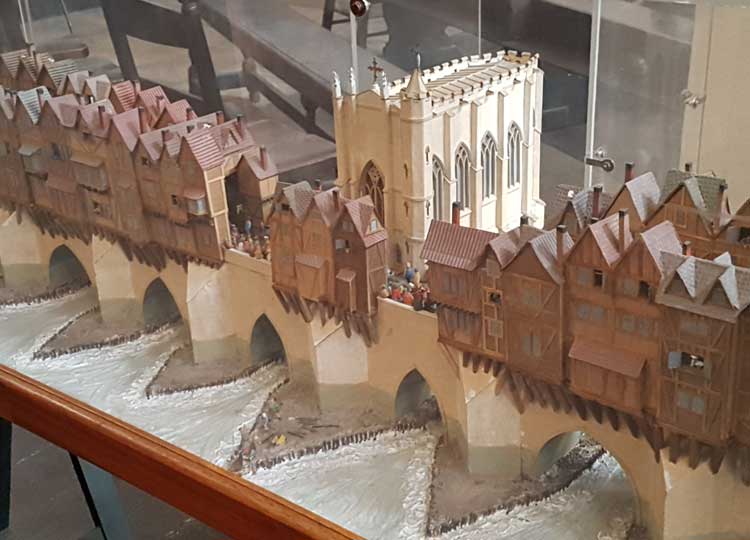
Another aspect of the bridge that the model captures is the number of arches that spanned the river between the north and south banks of the Thames.
There were twenty of them in total; and, since the width between the arches was around 30 feet, this used to funnel the Thames through the arches to create a drop of some six feet as its waters passed under the bridge from west to east.
The resultant rapids led to the dangerous activity of "Shooting the bridge" whereby boats would attempt to pass beneath the bridge without capsizing.
Inevitably, however, the boats would be overturned and the passengers would be tipped into the river and drowned.
The more sensible would climb out of their boats on the west side of the bridge, have the boat pulled through on a rope, and cross over the bridge to rejoin their vessel on the east side.
This gave rise to an old proverb "London Bridge is for wise men to go over and fools to go under."
And, sure enough, looking at the model, we are treated to a frozen moment as a boat approaches one of the arches of the bridge and prepares to engage the rapids.
Of course, we'll never know if the occupants made it!
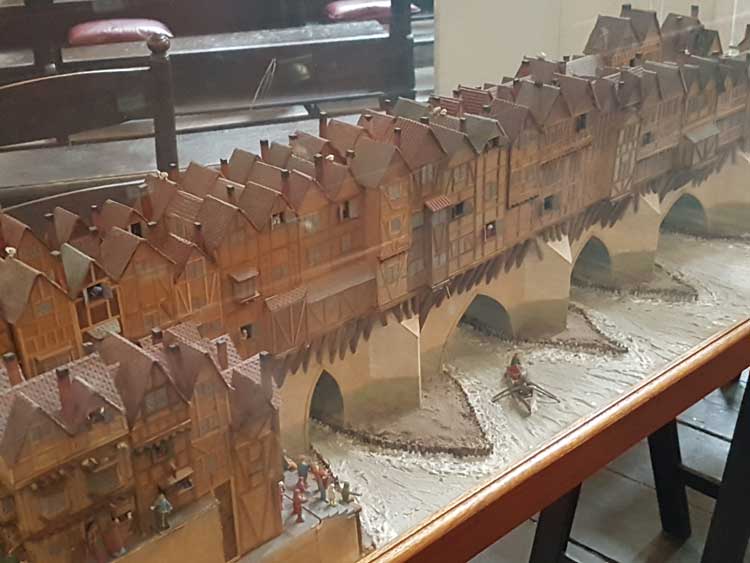
So, the next time you find yourself wandering along the busy Lower Thames Street, along which the traffic makes its way through the arches of new London Bridge; take a few moments to dip inside the church of St Magnus The Martyr, and let the model of Old London Bridge spirit you back to a long ago day in the early 15th century as the citizens of London jostle with one another on a bridge that was, quite rightly, considered to be one of the true wonders of Europe.